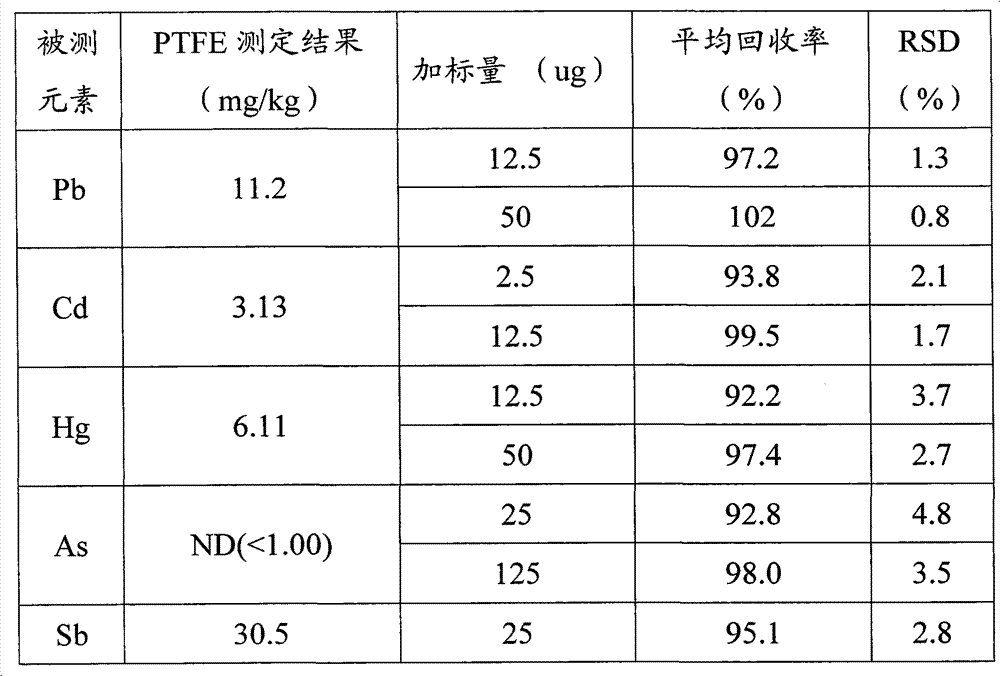Method for measuring content of heavy metal in polymer
A detection method and polymer technology, applied in the direction of material excitation analysis, thermal excitation analysis, etc., can solve the problems of long digestion time, large background interference, high viscosity of test solution, etc., and achieve the effect of easy implementation and reduced acid consumption
- Summary
- Abstract
- Description
- Claims
- Application Information
AI Technical Summary
Problems solved by technology
Method used
Image
Examples
Embodiment
[0017] Example: Detection of heavy metals in polytetrafluoroethylene (PTFE).
[0018] Standard curve drawing: configure a series of mixed standard solutions of lead, cadmium, mercury, arsenic, antimony, tin, copper and zinc, and test by ICP-AES. Draw a standard curve with the concentration of each heavy metal as the abscissa and the intensity value as the ordinate. The linear equation and correlation coefficient of the obtained standard curve are shown in Table 2.
[0019] Table 2 Linear equations and correlation coefficients of various heavy metal elements
[0020] Measured element
Linear equation
Pb
y=3.850x+0.64334
0.9994
Cd
y=170.36x+3.596
0.9999
Hg
y=24.65x+0.4462
0.9998
As
y=9.482x+0.0870
0.9998
Sb
y=9.229x+0.2991
0.9997
Sn
y=8.198x-1.873
0.9992
Cu
y=374.5x-3.565
0.9999
Zn
y=77.28x-0.4145
0.9997
[0021] The analysis steps of heavy metal content in PTFE are as follows:
[0022] 1. Oxygen bomb co...
PUM
 Login to View More
Login to View More Abstract
Description
Claims
Application Information
 Login to View More
Login to View More - R&D
- Intellectual Property
- Life Sciences
- Materials
- Tech Scout
- Unparalleled Data Quality
- Higher Quality Content
- 60% Fewer Hallucinations
Browse by: Latest US Patents, China's latest patents, Technical Efficacy Thesaurus, Application Domain, Technology Topic, Popular Technical Reports.
© 2025 PatSnap. All rights reserved.Legal|Privacy policy|Modern Slavery Act Transparency Statement|Sitemap|About US| Contact US: help@patsnap.com



